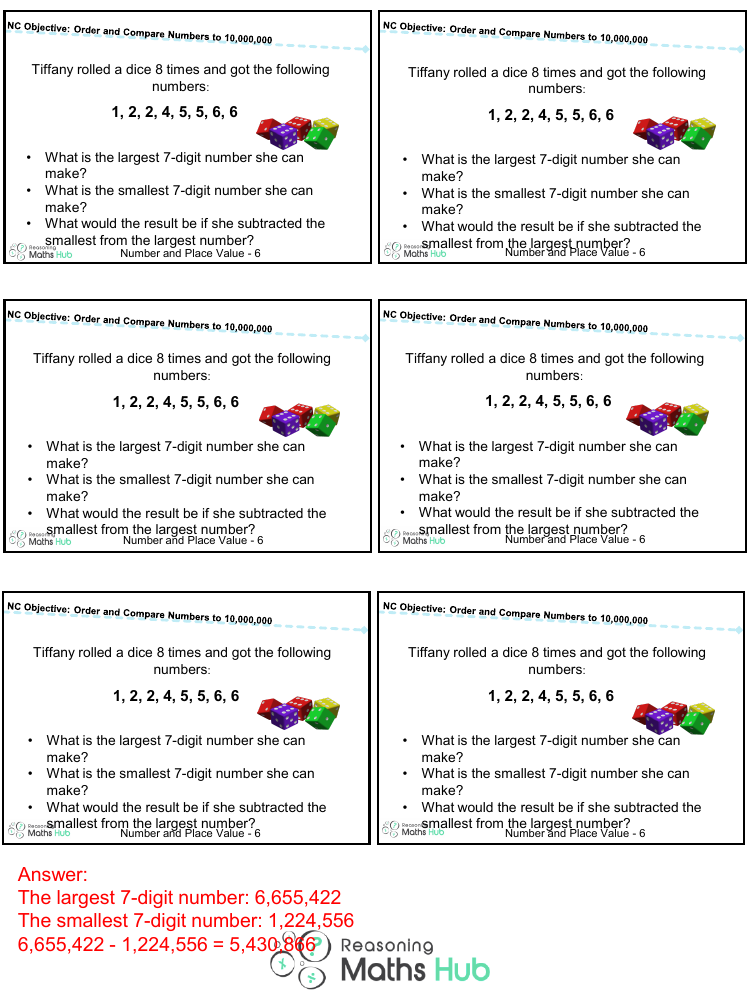Order and Compare Numbers up to 10 Million 3 - Reasoning

Maths Resource Description
In a numerical reasoning exercise, Tiffany rolls a dice eight times, resulting in the digits 1, 2, 2, 4, 5, 5, 6, and 6. The task at hand is to determine the largest and smallest 7-digit numbers that can be formed using these digits, followed by calculating the difference between the two. To construct the largest number, the digits should be arranged in descending order, starting with the highest value. Conversely, to create the smallest number, the digits should be placed in ascending order, beginning with the lowest value. Once the two numbers are established, subtracting the smallest from the largest will yield the difference between them.
For the largest possible 7-digit number, Tiffany would arrange the digits as 6,655,422. To form the smallest 7-digit number, she would arrange the digits as 1,224,556. To find the result of the subtraction, one simply needs to calculate 6,655,422 minus 1,224,556, which equals 5,430,866. This exercise not only requires an understanding of numerical order and place value but also tests the ability to apply these concepts to perform calculations and solve problems.